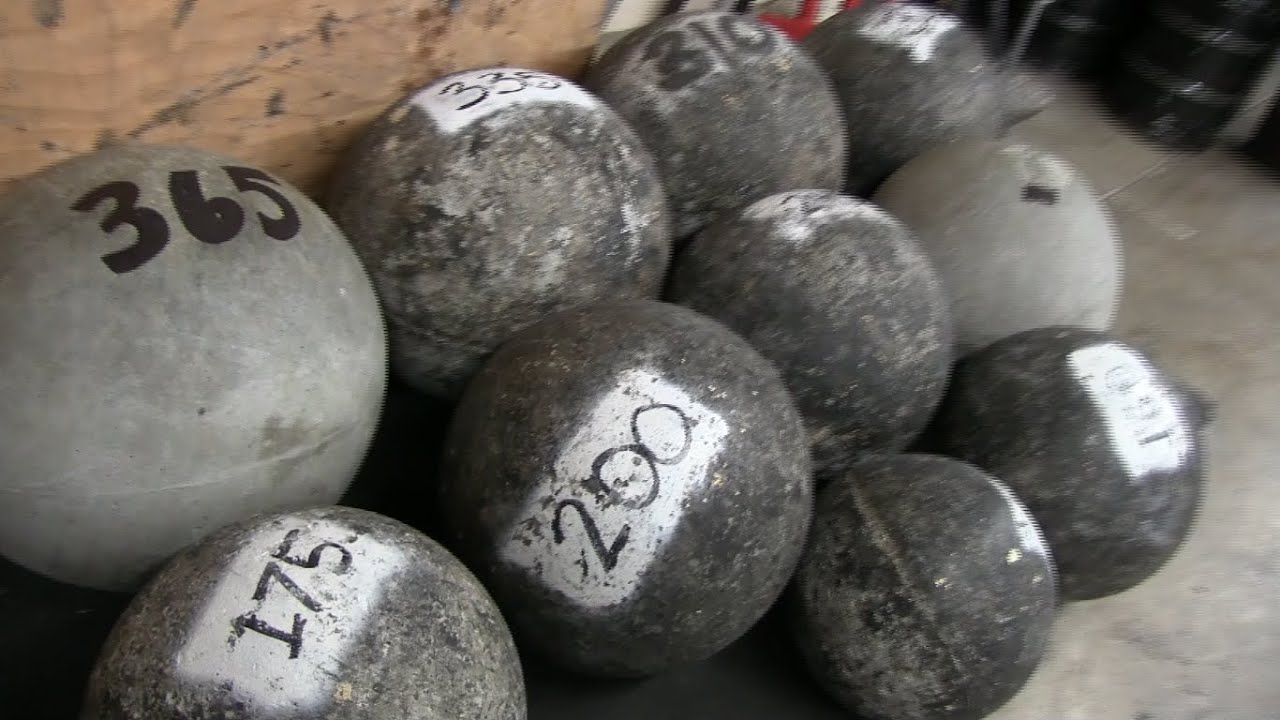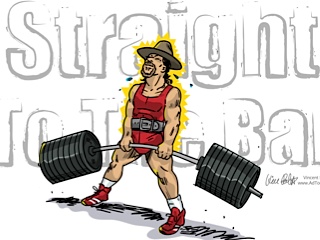Mixed Martial Arts is such an intensive fitness activity in terms of both physical and mental exhaustion that one has to train extensively in a number of areas in order to be adequately prepared. One has to have incredible endurance, enough at least to stay up and alert at all times. Being able to aptly utilize brunt force is also a huge advantage, so one has to be able to strengthen his body to such a level that he can draw said force, and not only that, but he must learn to concentrate well enough to focus that force on a particular target. If you’re enticed by the allure of Mixed Martial Arts and want to prepare yourself for the action by following an all-inclusive regimen to get your body up to speed, you’ll need to do more than just train for the matches themselves. You’ll need to amplify the strength and durability of your own body and mental state, and to do that you’ll have to incorporate several different strategic areas into your training routine.
Run (Again and Again)
Anyone with severely restrained stamina is going to struggle performing moves in Mixed Martial Arts. The amount of physical strain placed on the body is intense, so much so that someone ill-equipped to endure such repetitious strain can be endangering his own health and well being by putting himself in the action front and center. Unless you’re willing to improve upon your body’s endurance, you won’t be able to stay standing for very long, and it’s quite difficult to accomplish anything with your back pressed down against the floor. To stay up and about, you’ll need to endure some intensive cardiovascular workouts.
Running is the simplest, most straightforward way to periodically increase your body’s ability to endure physical strain over long periods of time. If you’re unaccustomed to running for long periods of time unbroken by rest, you’ll need to build your stamina up slowly at first before really pushing yourself hard. Start by running a mile or two every day until you’re able to do so without ending up severely out of breath, panting, etc. Pushing your body further initially when it can barely tolerate a couple of miles of continuous running isn’t going to do you or your training routine any favors. Once you’ve built up your endurance and can last for several miles rather well at a decent pace, you can begin pushing yourself harder.
Focus on running for as long as possible, as opposed to running really fast but only for a limited set of time. You’re not training to break a marathon time record here, you’re training to endure the tests required of mixed martial artists. If you wanted to break the world record at the Boston Marathon, your pacing is essential to follow and tweak, but here it is the strict amount of time you’re able to last on foot that is of greater urgency. Pacing is important only insomuch as to not have your routine thrown out of whack (dramatically shifting speeds while running can cause your body unnecessary extra exhaustion). Using a treadmill can help you maintain a strict speed pace (as you can set controls on the machine to follow your directions). Running outside is fine too, but many people, especially novice runners, can find it difficult to maintain their speed consistently over several miles. Run often, at least 4 days a week, until you’ve felt your endurance has improved to a point where you can switch over to other stamina-testing cardio activities, such as stair climbing, bike riding, etc. Then, you can choose more of your own preferred activities over running alone.
Punch It Out
Even when you don’t have a sparring partner, you’ll need to work on your punches and kicks with something weighted enough to compare to an actual human competitor. By utilizing a heavy punching bag, you can test your might against a weight level sufficient enough to not warrant needing a sparring partner all too soon. If you’re training on your own, a heavy punching bag can be an effective tool, especially with repeated use. After you’ve built up your endurance enough, you should be able to take on a punching bag at full force and endure long term tests of your jabbing ability without having to worry about an overly exhausted partner.
Eventually, however, the punching bag will become more of a complementary tool that you use in conjunction with a sparring partner. Having another person around is a huge help, particularly because there is so much unpredictability in fighting an actual person. When facing a boxing bag, you are jabbing a stationary object that’s only similarity to people is its weight. When facing a sparring partner, you’re honing in closer to what actually occurs in Mixed Martial Arts (needless to say, there is no master champion punching bag out there you’re going to meet up for a challenge one day).
Take advantage of facing off against a sparring partner as frequently as possible, as it will help you with predictive strategies (knowing when to throw a punch or kick, as well as knowing when to hold back and when to dodge). Though a punching bag can technically last longer in the ring, which makes it a vital tool to have, it can’t help you with fighting strategy nearly as well.
Calling It Quits
Knowing how far you can push yourself before your body gives out might be among the most critical pieces of information you need to discover during your MMA training. Having this knowledge available to you in advanced can help you with in-fight strategy, as you’ll need to ration out your energy and strength at crucial times, which is tremendously difficult if you don’t have any clue how much left your body can take. Boxing, wrestling, and MMA are much the same in this regard, as you’re effectively taking yourself out of a match if you overdo it way too quickly and give out before the long haul part of the match even kicks in. Failure to accurately judge your own give-out point can be your own undoing as a professional MMA fighter.
Calling it quits doesn’t have anything to do with long-term cessation of your fighting practice. It simply means knowing when to hold back a punch or kick that doesn’t need to be thrown, saving every last bit of energy until it is absolutely needed. Throwing a punch that’s very likely to get blocked can be a waste of energy late in the game, when you may need to draw from your energy reserves minutes later just to stay up and alert. Learning to ration out your energy, to pace yourself properly, and to withdraw when you’re severely endangering yourself will help you master the finer points of MMA fighting. Be sure to have help around when testing your limits, in case you need medical assistance or some other help at an unexpected moment. After all, it’s hard to rely on your own devices if you’ve fallen to the floor and can’t get up.
Keeping a Watchful Eye
A major part of Mixed Martial Arts training has nothing to do with performing any specific physical activity. The mental part of the game, after all, is as important if not more important than the physical aspect of it. Many successful MMA practitioners have the help of an excellent coach or trainer who can be a great asset in terms of converting actions in the ring to knowledge for later use. If you’re unfortunate enough to have to train without such a guide, however, having a keen eye for strategy will be your greatest asset over time.
If you’re able to, watch some video footage of fights both major and minor. The amount of MMA footage out there is extensive, so you shouldn’t have any trouble calling up video from any number of matches that have occurred in the past 10 years at least. The idea here is to expose your brain to different scenarios more so than to just watch some of the best or most eventful matches. Here, diversity is key. Watch how certain matches are won in a particular way, and then see how completely different approaches seem to have similar winning effects. That way, as you collect and interpret these strategies in your mind, you may be able to apply them yourself later on to give yourself a strategic advantage in a fight. MMA is like chess in many ways, and knowing all the available moves already puts you leagues ahead of many other competitors seemingly up to the challenge.
You don’t want to focus all of your visual research on how a fighter won, however. In fact, you do also want to spend a significant amount of time viewing how participants lost. Winning is great, after all, but knowing and truly understanding how and why a fighter lost a particular round can help you predict instances to avoid similar fates in your own training. The greater the framework for your understanding of how matches can be won or lost, the greater your ability to compensate in real time in a match will be. Your mind has to be as quick as your punches and kicks, faster even, in order to make sure the next hit you throw is the right one to keep you in an advantageous position.
It’s important to remember, however, that video footage has its limits, as do theoretical applications. At some point, you’ll need to get into a ring and practice different moves and strategies you’ve seen, perhaps even mixing and matching a bit by incorporating elements from one fight into a play in another. The more creative you get without really pushing the boundaries of feasibility too much will only play to your advantage in the long run, so don’t be afraid to experiment. After all, winners are rarely those described as timid or hesitant.
Putting It All Together
A training routine isn’t just a bunch of individual parts with no true relation to one another. In order to get the most out of your training, you need to find a way to fuse somewhat disparate elements together into a meaningful routine of some sort. Adaptability is essential. If you’re already an excellent long distance runner who excelled at cross country from high school all the way through college and can still run 8 miles like it’s nothing today, you shouldn’t focus a huge chunk of your time on running, cardio training, and endurance building. It’s likely you’ve already grasped many elements to that side of your training routine, so only tweak and adjust as needed to save valuable time catching up on areas you may be lacking in more greatly. Similarly, if you’re an academic MMA nerd who has studied hundreds of hours of footage and thousands of pages of recaps and analysis, you’re not going to want to waste a whole lot of time scouring through new footage. Adaptation is the key to evolution. If you can’t adapt your game, you’ll ‘die’ off and fall into irrelevancy rather quickly.
Take all the aspects of training you see before you, create a weekly routine that works around your needs as well as your own work/life schedule, and go from there. You don’t have to feel discouraged if your initial plans don’t work out exactly the way you predicted. Instead of stressing over spilt milk, simply adjust your routine as necessary. Small changes to your overall plan worked out as needed will be easier to incorporate than more arduous changes shoved together at once anyway. Keep things simple and your work will pay off well in the end.
So keep practicing, keep watching footage and reading play-by-plays, and most important, don’t call it quits unless you’ve changed your ambitions. Getting stronger and more focused is one thing; getting ready to step into the ring is quite another, so be ready.











0 Comments